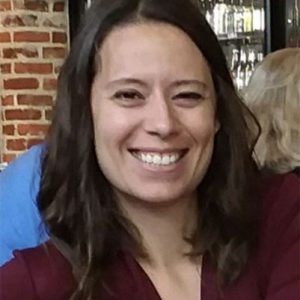Affiliation: University of North Carolina, Greensboro

Robyn Le Blanc is Assistant Professor of Classical Studies at the University of North Carolina at Greensboro. She holds a Ph.D. and an M.A. from UNC Chapel Hill and a B.A. from George Washington University. She was awarded with the James Y. Joyner Award for Teaching Excellence at UNC Greensboro in 2020. Her areas of specialization are Roman provincial archaeology, numismatics, and Roman religion. Her publications include “The Marsyas of the Forum Motif on Coins from Roman Mesopotamia and Osrhoene” (The Numistatic Chronicle, 2020), and “The Glass of Islamic Ashkelon” (in Ashkelon 8: The Islamic and Crusader Periods, T. Hoffman ed., 2019). Professor Le Blanc is an AIA Kershaw Lecturer for 2021/2022.
This talk explores the so-called “colonial” coin types of cities in the Roman Near East between the 1st-3rd c. CE. These designs (Romulus and Remus, Aeneas, images of Roman founders ploughing, and a depiction of a statue of Marsyas from the forum in Rome) were often newly introduced on the locally minted coins of cities after they received colonial status. What messages did these designs express about what it meant to be a colony? How was this imagery adopted and then adapted for local audiences? Did images of Roman founders and foundation rituals replace previous civic traditions? What impact (if any) did the grant of widespread citizenship under the emperor Caracalla (via the Constitutio Antoniniana) have on these designs, and the ways that colonies conceived of themselves via their numismatics?
Short bibliography and/or website on lecture topic:
The Roman Provincial Coinage online website: https://rpc.ashmus.ox.ac.uk
Howgego, C., V. Heuchert, and A. Burnett, eds. 2007. Coinage and Identity in the Roman Provinces. Oxford: Oxford University Press.
This talk explores city founders and foundation myths in the Roman Near East. Depictions of these local traditions appear on civic coinage, sculpture, and on the Caesarea bowl, and some are described by ancient authors such as Pliny and Pausanias. Foundation myths reflect ideas about the community and its past, and helped forge and maintain cultural, ethnic, and kinship links between and within communities. Investigating the rich corpus of material related to this practice, we will see (for example) how Joppa placed the story of Andromeda and Perseus in southern Judaea, and how cities of Syria and Arabia promoted Alexander the Great as founder and ancestor. We will survey the role of Io, Heracles, and the Cretan king Minos at Gaza, the nymphs Nysa and Ambrosia at Scythopolis and Damascus, and the eponymous founder Ascalos and the local goddess Derceto from Ascalon.
Short bibliography and/or website on lecture topic:
The Roman Provincial Coinage online website: https://rpc.ashmus.ox.ac.uk